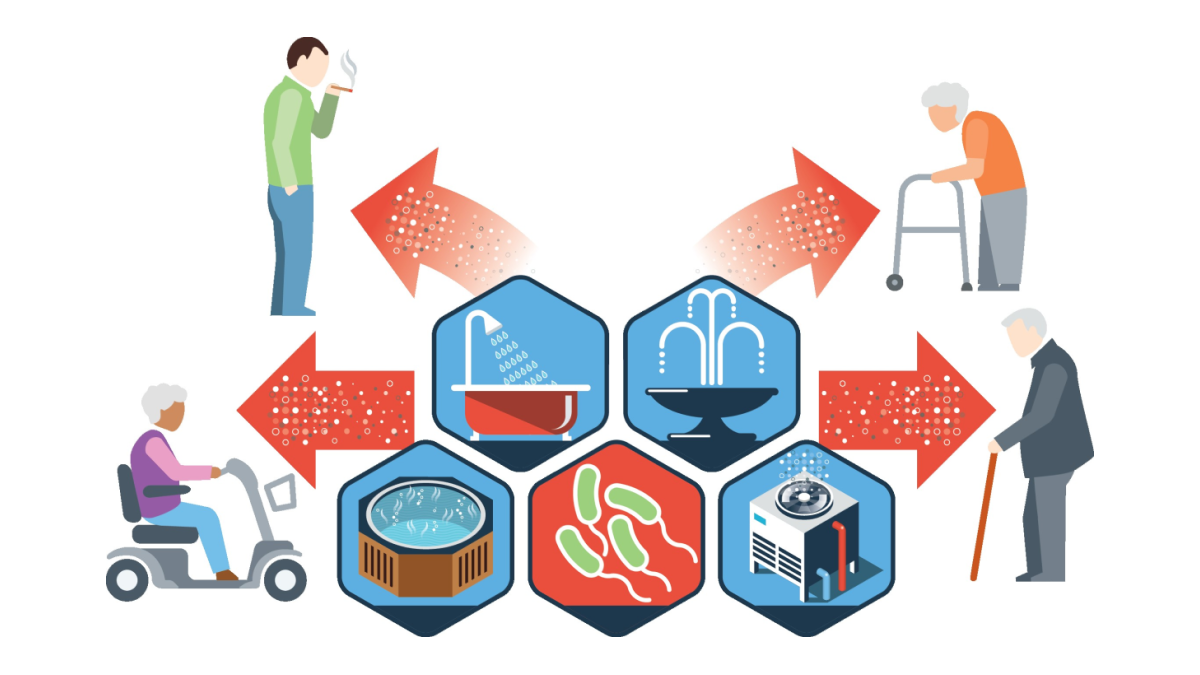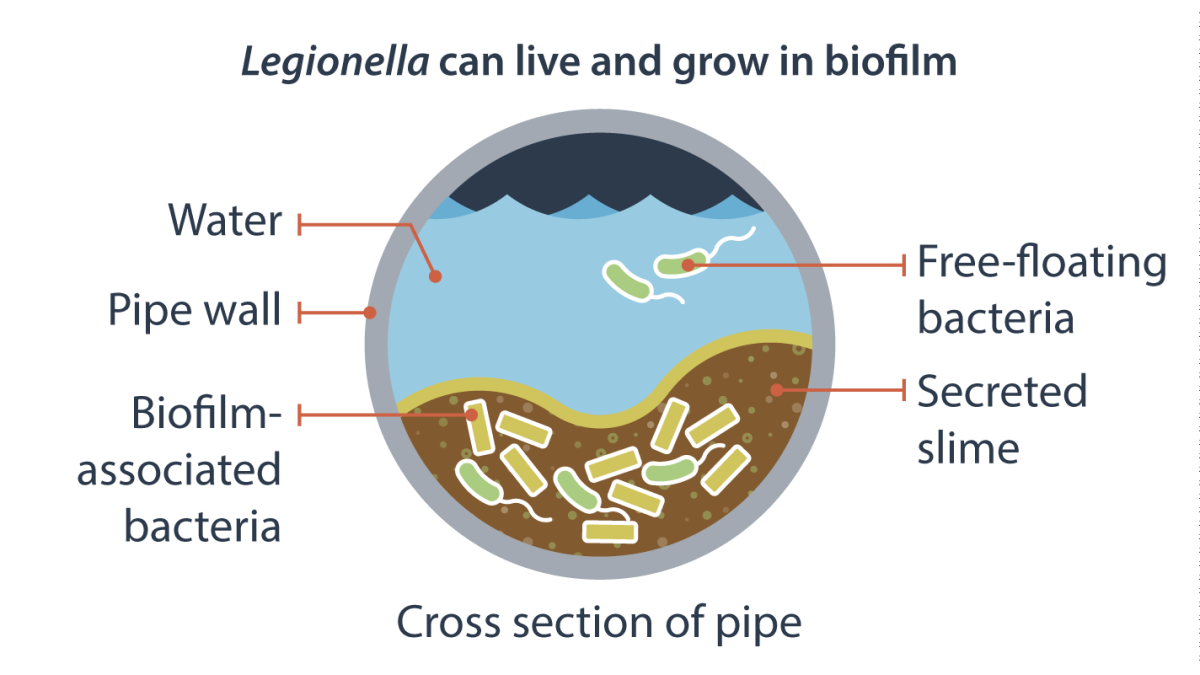Key points
- Controlling Legionella growth and spread is the primary prevention strategy for Legionnaires' disease.
- Legionella can grow and spread in building water systems or certain devices.
- Building owners and managers can take steps to reduce the risk of Legionella growth.

Why it's important
Naturally occurring organism
Legionella, the bacterium that causes Legionnaires' disease, occurs naturally in freshwater environments, like lakes and streams. Generally, the low amounts of these bacteria in freshwater do not lead to disease.
Can grow in building water systems
Legionella can pose a health risk when it gets into building water systems and certain other devices. Generally, to pose a health risk, Legionella has to
- First: Grow (increase in numbers)
- Then: Spread through small water droplets (aerosolization)A
Factors that lead to Legionella growth
A variety of internal and external factors can lead to a Legionella problem, including:
Internal factors
- Biofilm
- Favorable water temperatures
- Inadequate levels of disinfectant
- Scale and sediment
- Water stagnation
- Changes in water pressure
- pH fluctuations
External factors
- Changes in municipal water quality
- Construction
- Water main breaks

Where Legionella can grow or spread
Legionella can grow in many parts of building water systems. Examples include:
- Expansion tanks
- Faucet flow restrictors
- Hoses, pipes, valves, and fittings
- Hot and cold water storage tanks
- Water filters
- Water hammer arrestors
- Water heaters
Certain devices spread water droplets, which can have Legionella in them. Examples include:
- Aerators
- Centrally installed misters, atomizers, air washers, and humidifiers
- Medical equipment
- Nonstream aerosol-generating humidifiers
- Point of use fixtures such as showers, sprayers, and faucets
Examples of medical equipment includes CPAP machines, hydrotherapy equipment, and bronchoscopes.
In other devices, Legionella can both grow and spread. Examples include:
- Cooling towers
- Decorative fountains
- Electronic and manual faucets
- Hot tubs
- Ice machines
- Infrequently used equipment including eyewash stations
How to address Legionella growth
Lower disinfectant levels in building water systems can allow Legionella growth if steps aren't taken to stop it.
The following processes can reduce the amount of available disinfectant in water:
- Filtering
- Heating
- Storing
Examples of disinfectants include
- Chlorine
- Chlorine dioxide
- Monochloramine
Legionella grows best within a certain temperature range (77°F-113°F). Legionella may grow at temperatures as low as 68°F (20°C), as well as at temperatures above 113°F.
To keep water outside the range for Legionella growth, it's important to keep
- Cold water cold
- Hot water hot
In warm climates or near heat sources, water in cold water pipes may reach a temperature that allows Legionella growth.
When water doesn't flow well, the areas of stagnation can
- Encourage biofilm growth
- Reduce levels of disinfectant
- Lead to water temperatures favorable for growth
Understanding a building's water flow can help identify areas at risk of Legionella growth.
Maintaining and operating a building's equipment effectively will help prevent biofilm, organic debris, and corrosion from contaminating the water system. They can provide a habitat and nutrients for Legionella.
- While less common, people can get sick by aspiration of drinking water containing Legionella.
